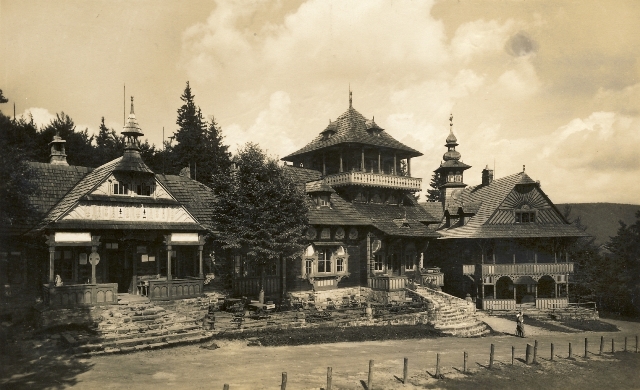Maměnka and Libušín
Dušan Jurkovič’s
Construction
Jurkovič began to work on his architectural plans for Libušín and the neighbouring Maměnka in 1897, after being commissioned by the Radhošť Mountain Union. Both of these mountain huts (called refuges, or “útulny” in Czech), erected in the style of Folk Art Nouveau with Wallachian features, were officially opened on 6 August 1899.
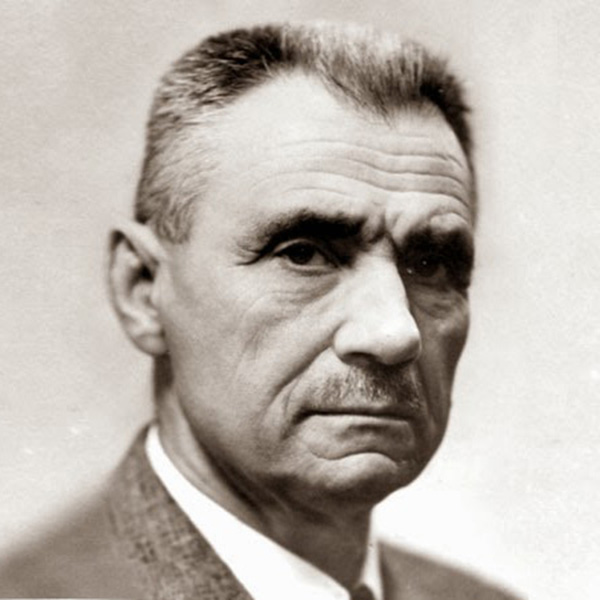
Dušan Samo Jurkovič
The roots of Jurkovič’s artistic choice to work with folk forms can be traced to his family background: his father belonged to a famous group of Slovakian patriots, while his mother was an expert in folk art. After studying at the lower grammar school in Sopron, he left for Vienna, where in the years 1884–1889 he studied at the State Technical School, headed at that time by Camillo Sitte.
During a short stay at the architectural studios of Bulla in Martin, he became fascinated by the folk practice of carving wood. For six years he then worked in the studio of the architect Michal Urbánek in Vsetín. He was partially involved in bringing to fruition the building of the National Exhibition in Vsetín and the National Czechoslovak Exhibition in Prague in 1895. The accolades for his work brought him the commission to design the ensemble of buildings for tourists and ramblers – Libušín and Maměnka – at Pustevny (1897–1899).
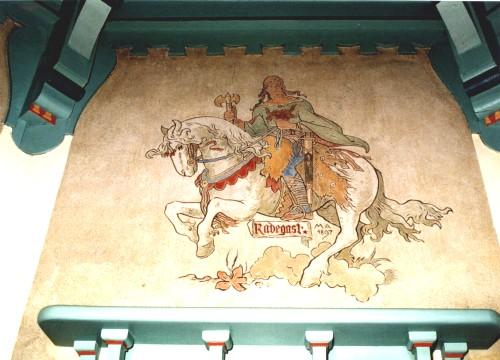

Decoration
The painter Mikoláš Aleš also worked on the decoration of Libušín. He made the drawings of the god Radegast, the border soldier Stavinoha and two bandits, according to which the interiors were painted by academy painter Karel Štapfer.

Postwar condition
At the close of WWII, the refuges had been devastated after having housed Hungarian auxiliary units and the Hitler Youth. Libušín and Maměnka had fallen into such a state that they were considered for demolition.
They were preserved, in part, thanks to the intercession of their creator, the architect Jurkovič (by that time almost 80 years old), who travelled in person to Pustevny in 1947. He also said that, on reflection, he would not today (i.e.1947) have designed such buildings for such a spot, since they were not sufficiently resilient to the local climatic conditions. The oldest refuges slowly became unsafe for inhabitation, so that in time the Hotel Tanečnica and nearby Hotel Radegast were the only functioning huts at Pustevny.
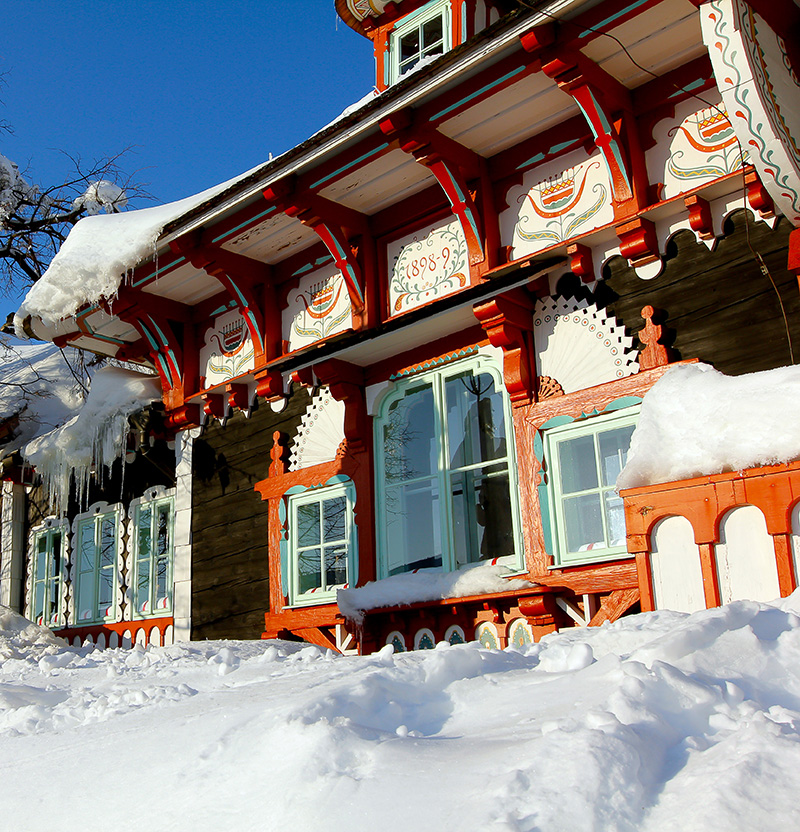
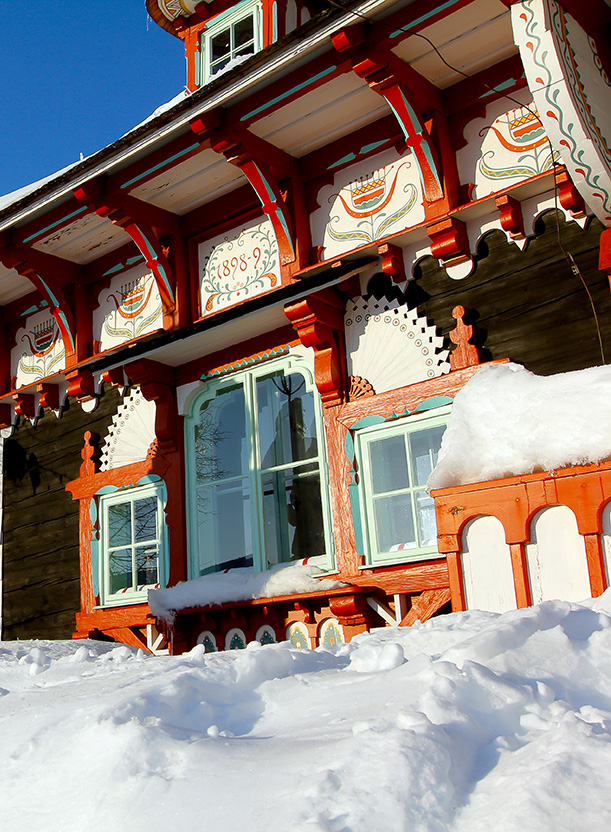

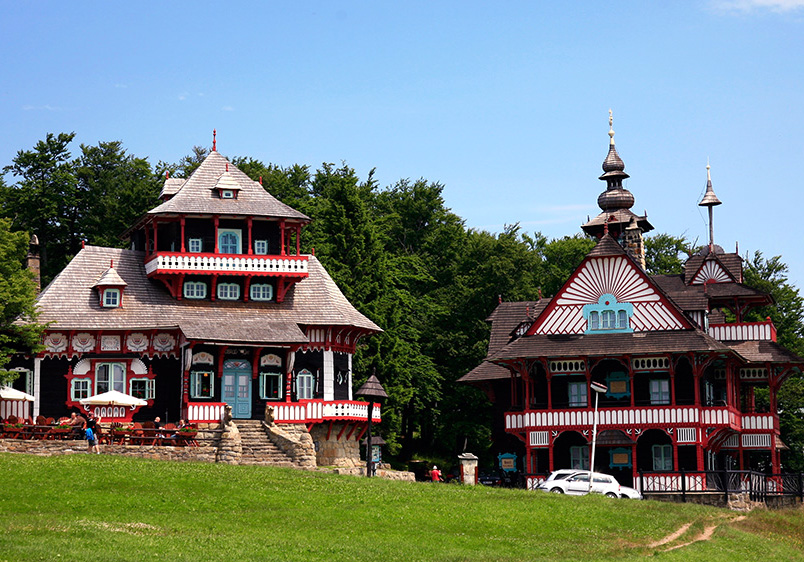
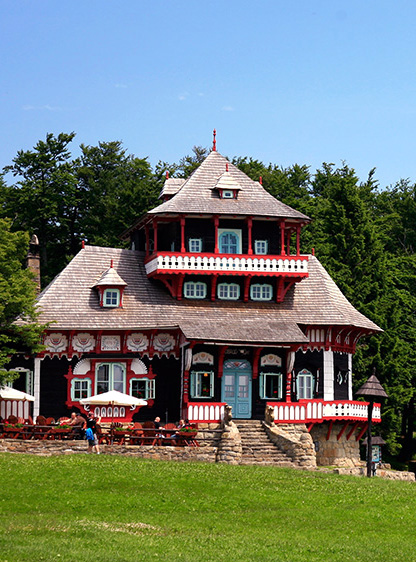
Renovation
In 1950, the Radhošť Mountain Union was disbanded and the buildings became the property of the state. In the 1980s the Wallachian Open Air Museum floated the idea of carrying out the full-scale reconstruction of Pustevny’s refuges. The museum’s plan was not put into practice, however, until 1995. After four years, in 1999, the newly restored Libušín restaurant restarted its ovens, and in 2003 the hotel Maměnka similarly opened for business. During the reconstruction period, the Pustevny resort was declared a National Cultural Monument. Both buildings are today looked after by the Wallachian Open Air Museum.

Libušín
On 3 March 2014, however, Libušín was badly damaged by fire, which wrecked havoc particularly on the right side of the building, in which was built the aesthetically priceless restaurant.
The cause of the blaze, coming at the close of the 2014 winter, was a poorly repaired stove. During an overhaul of the heating system in 2008, an air pocket was introduced in the chimney system that wasn’t fireproofed from the wooden walls and beams. Technicians during inspections had also failed to spot the error.
Work to restore Libušína has been proceeding since 2016, and should last until mid-2019.
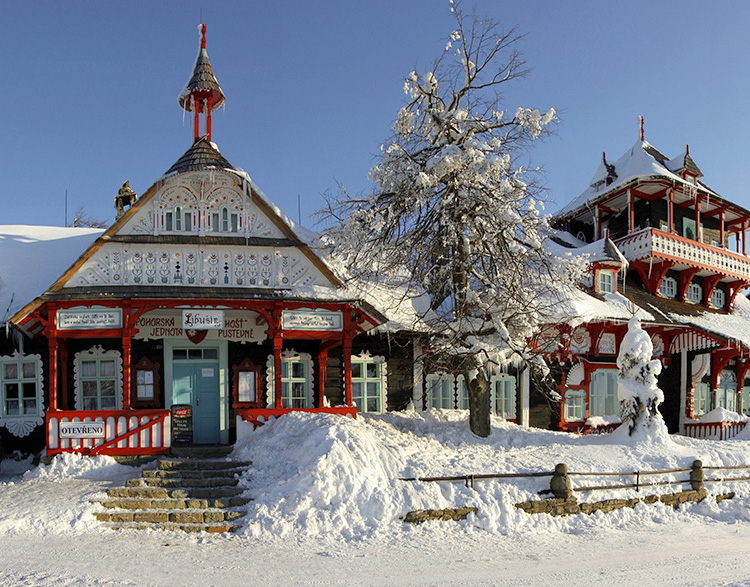
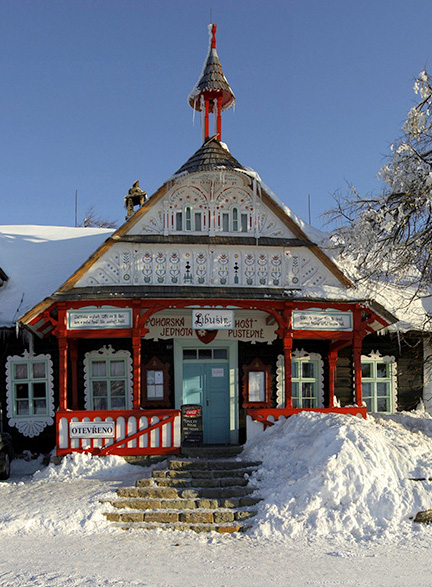

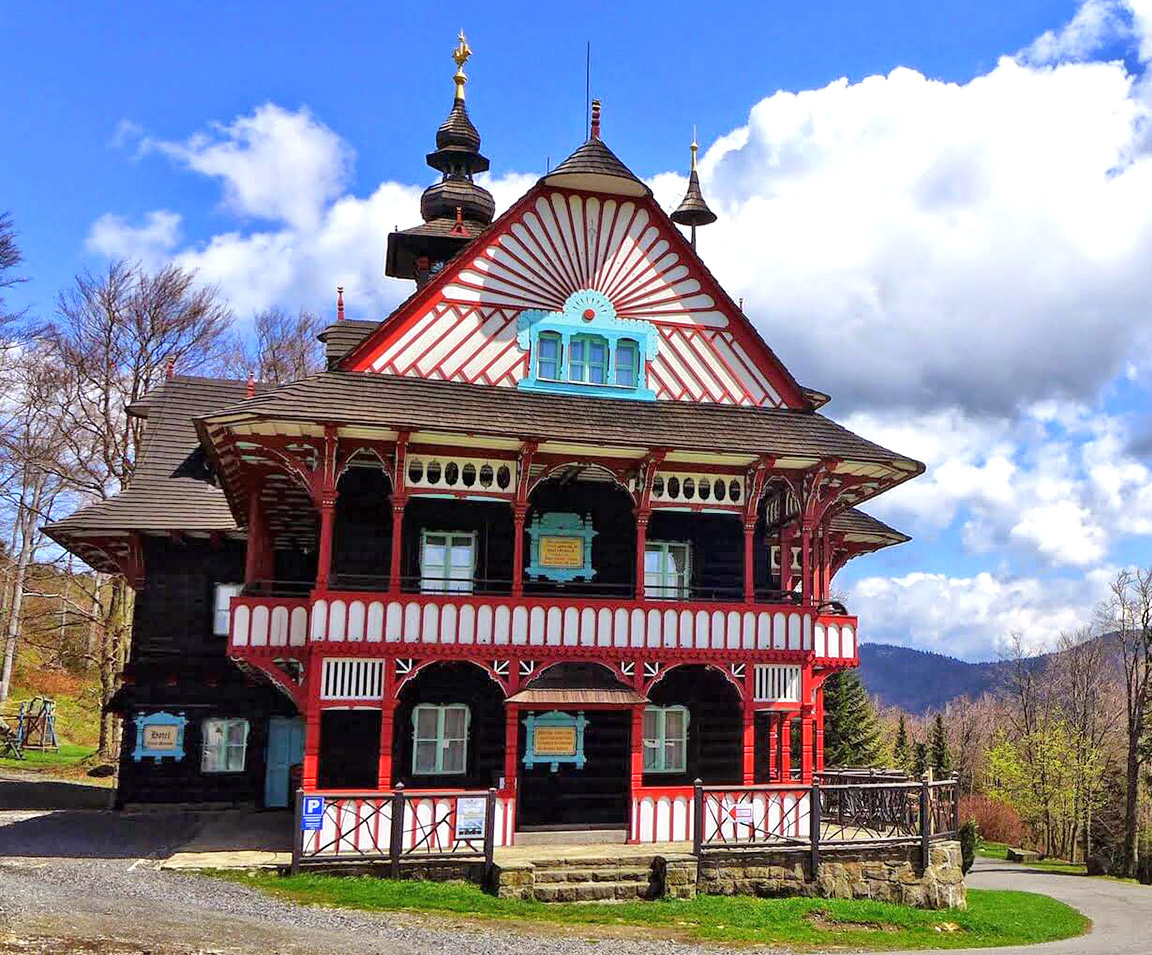
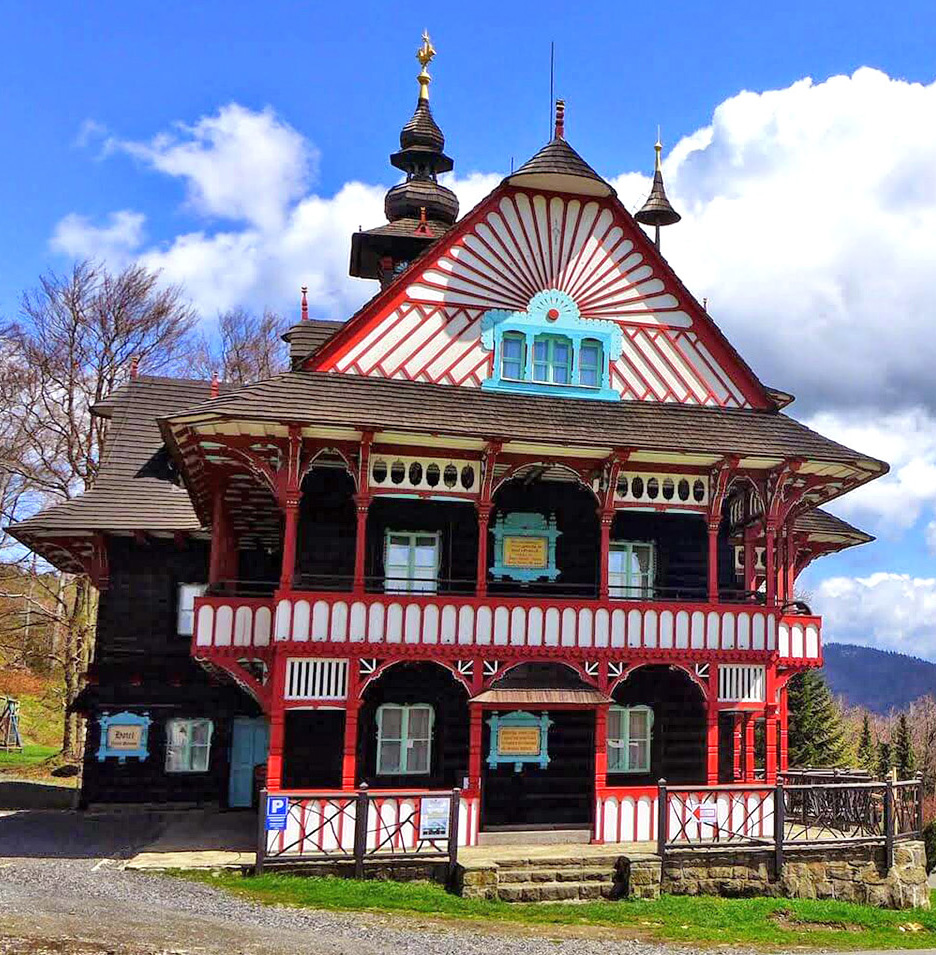
Maměnka
Hotel Maměnka is open all year round to all visitors at Pustevny.
In mid-October 2017 the boiler room in Maměnka on Pustevny was dismantled as part of its future reconstruction. The aim of the project is to stabilise the structure, technology and humidity of the boiler room,
which is partly built into the slope. The damp-proofing and renovation of the boiler room walls has eliminated the effects of ground humidity and limited the absorption of rainwater run-off.



